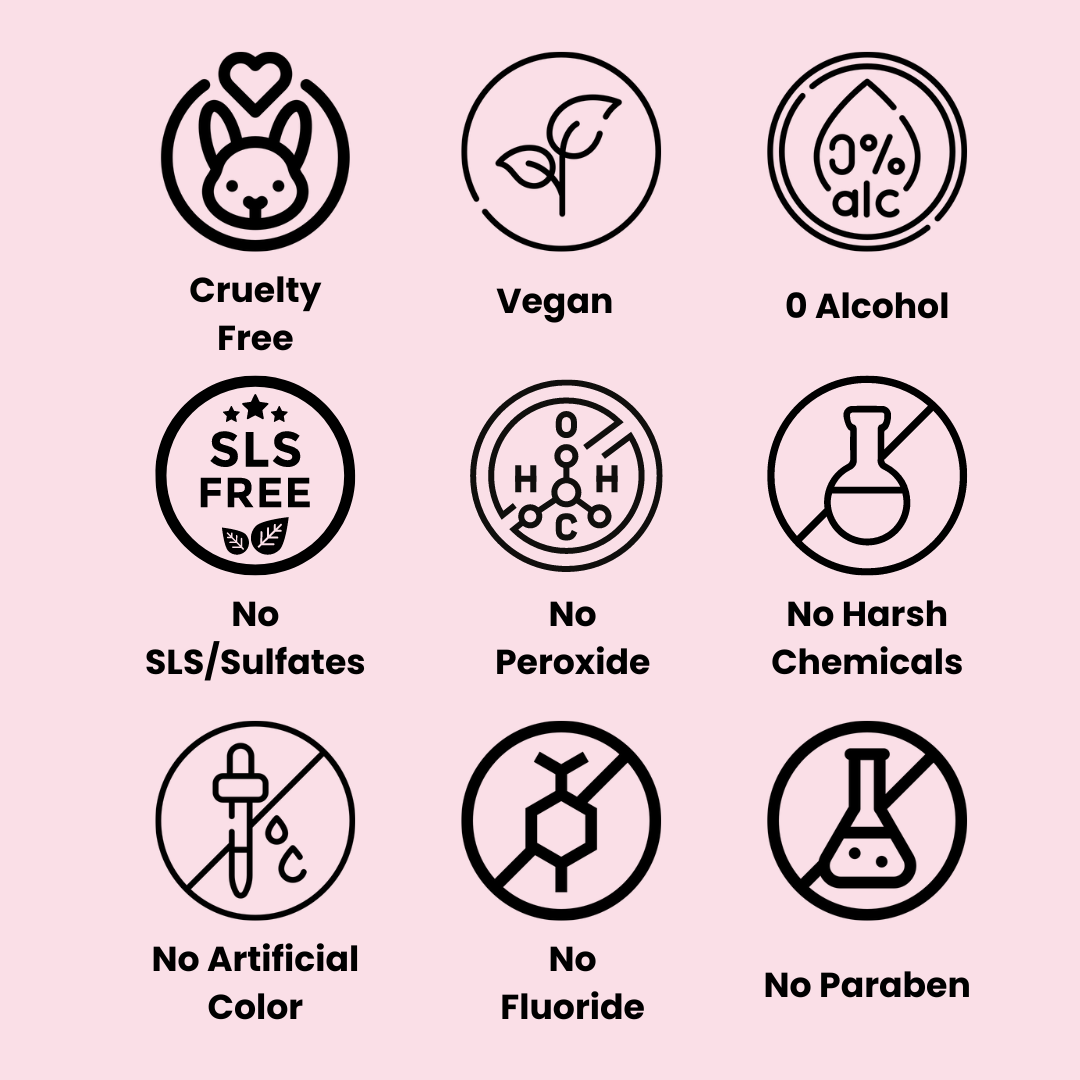
How Long Do I Need to Wear My Retainers?[2023]
Share
Inside this Article:
Hey there, congratulations on finishing your braces or clear aligner journey! You must be so excited to finally be done with all the adjustments and restrictions that came with the teeth alignment. However, before you get too carried away with all the sweets and hard foods you couldn't enjoy during your treatment, there's one more thing to consider: retainers.
Now, you might be wondering, "When can I stop wearing my retainers? Do you have to wear a retainer forever? Are retainers for life?" The truth is, wearing retainers is just as important as wearing braces or aligners. Your orthodontist has put in a lot of effort to align your teeth, and the retainer helps to keep them in place.
But don't worry, wearing a retainer doesn't have to be a burden. In fact, many people find that after a while, it becomes second nature. Plus, there are different types of retainers, so you can choose one that fits your lifestyle and preferences. We’ll cover all of that in this article. By the end, you'll have a better understanding of why you need a retainer and how long you'll need to wear it.
Why Do I Need a Retainer?
You need a retainer to maintain the results of orthodontic treatment. After braces or clear aligner treatment, your teeth will naturally want to shift back to their original position. A retainer helps prevent this by keeping your teeth in their new position until they settle in place and helps tooth stabilization. The process is called dental relapse prevention.
The bone and tissue around your teeth also need time to adjust and stabilize after treatment, which is why wearing a retainer is important. Without a retainer, your teeth may start to shift, and you may need to repeat orthodontic treatment to correct the issue.
According to a study published in the American Journal of Orthodontics and Dentofacial Orthopedics, "Retention protocols and use of vacuum-formed retainers among orthodontists in the United States", it is recommended to wear retainers full-time for the first few months after braces removal, followed by wearing them at night for a minimum of one year. The study found that patients who followed this protocol had significantly fewer tooth movements than those who wore their retainers less frequently or not at all.
Another study published in the same journal found that patients who wore their retainers as directed had a significantly lower risk of developing dental relapse, which is when teeth move back to their original position after braces or other orthodontic treatment.
Factors that could determine how long you need to wear the retainers
There are several factors that can impact how long you should wear a retainer after braces. Some of these factors include:
- Age: Younger patients may need to wear retainers longer because their teeth and jaws are still growing and developing. This means that there is a higher chance of relapse or shifting of teeth after the braces are removed. Additionally, younger patients may be more prone to habits like thumb-sucking or tongue-thrusting, which can also affect the alignment of teeth. Wearing a retainer for a longer period can help ensure tooth stabilization, which means teeth can remain in their corrected positions, and prevent the need for further orthodontic treatment later in life.
- Initial alignment: If your initial misalignment was more severe, it may take longer for your teeth to settle into their new positions. This is because moving teeth that are more misaligned requires more force and a longer treatment time. As a result, it may take longer for the bone and surrounding tissues to adapt to the new positions of the teeth, and the teeth may be more prone to shifting back to their old positions if not held in place with a retainer for a longer period of time.
- Compliance: The length of time you need to wear your retainer can be affected by how well you comply with your orthodontist's instructions for wearing it because if you don't wear it for the recommended amount of time, your teeth may begin to shift back towards their original position. This could potentially require you to wear your retainer for a longer period of time than originally planned to properly maintain your newly aligned teeth. On the other hand, if you wear your retainer consistently as directed by your orthodontist, you may be able to shorten the amount of time you need to wear it.
- Tooth movement: After the braces are removed, the teeth may have a tendency to shift back to their original position, which is known as dental relapse. The amount of relapse can vary from person to person and may depend on factors such as age, severity of the initial misalignment, and compliance with retainer use. Therefore, some patients may experience more tooth movement and require longer retainer wear to maintain the results achieved by their orthodontic treatment.
- Type of retainer: The type of retainer you wear can also impact how long you need to wear it. For example, permanent retainers may be recommended for some patients, which means they will need to wear the retainer for as long as the retainer remains in place.
Do you have to wear a retainer forever?
As the same study mentioned above, after surveying 2,509 orthodontists in the United States, 80% of orthodontists recommend full-time retainer wear for the first few months after braces removal, followed by night-time wear for a minimum of one year. However, some orthodontists may recommend longer or shorter periods of retainer wear depending on the individual patient's needs.
The general rule of thumb is that you should wear your retainer for a little longer than you wore your braces for. For instance, if you had your braces on for a year then you’ll want to wear your retainer as often as possible for a little over a year before considering a reduction.
There are generally three levels of retainer usage:
- Full-time wear: This is usually recommended for the first few months after braces removal to allow your teeth to settle into their new positions. Your orthodontist will typically advise you to wear your retainer for at least 22 hours a day during this period.
- Nighttime wear: After the initial full-time wear period, over time, as your teeth stabilize and your orthodontist monitors your progress, you may be able to gradually reduce the number of hours per day that you wear your retainer. Your orthodontist will likely recommend wearing your retainer at night for a minimum of one year. This ensures that your teeth stay in their new positions and prevents them from shifting.
- Occasional wear: Once you have worn your retainer at night for one year, your orthodontist may advise you to wear it less frequently, such as a few times a week or a few times a month. The frequency will depend on your individual situation and the orthodontist's recommendation.
Do I Need Permanent Retainers?
Permanent retainers, also known as bonded or fixed retainers, are recommended by orthodontists to help prevent teeth from shifting back to their original position after braces or clear aligner treatment. Permanent retainers consist of a thin wire that is bonded to the back of the teeth, typically the lower front teeth. Unlike removable retainers, such as clear plastic aligners or wire retainers, permanent retainers are always in place and do not require daily maintenance.
Permanent retainers are typically recommended for patients who are at high risk of teeth shifting, such as those with severely crowded teeth or those who experienced significant movement during orthodontic treatment. In addition, patients who have undergone surgical orthodontic treatment or have a history of relapse may benefit from a permanent retainer. Ultimately, the decision to use a permanent retainer should be made in consultation with an orthodontist based on individual needs and risk factors.
According to a survey conducted by the American Association of Orthodontists in 2018, approximately 30% of orthodontic patients were estimated to receive a bonded lingual retainer (a type of permanent retainer) after treatment. It's worth noting that this percentage may have changed over time and may differ in other regions or countries.
Summary
Wearing a retainer is crucial for maintaining the results of orthodontic treatment and preventing tooth relapse. According to studies, it is recommended to wear retainers full-time for the first few months after braces removal, followed by wearing them at night for a minimum of one year. However, factors such as age, initial teeth alignment, compliance, tooth movement, and type of retainer can affect the length of time you need to wear a retainer. Ultimately, consulting with your orthodontist is the best way to determine the appropriate duration of retainer wear for your individual needs.
Introducing Fizzy's 3-in-1 retainer cleaner, mouthwash, and foam toothpaste! Not only can it effectively clean your clear retainer, but also serve as a powerful mouthwash that eliminates bacteria, prevents plaque buildup, and promotes overall oral hygiene. Try Fizzy's today for a convenient and effective oral care solution.
Sources:
Retention protocols and use of vacuum-formed retainers among specialist orthodontists

















